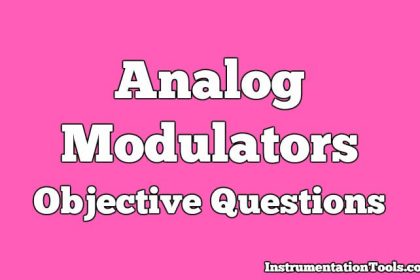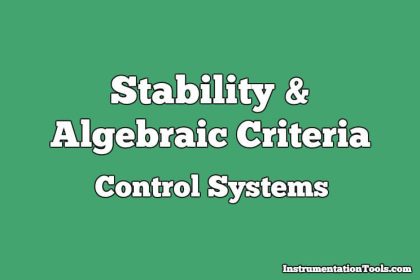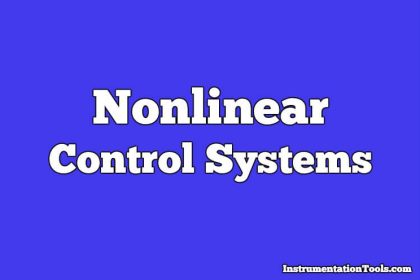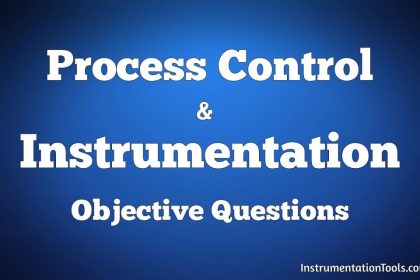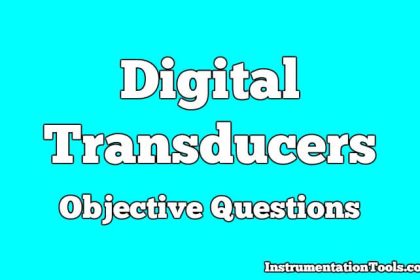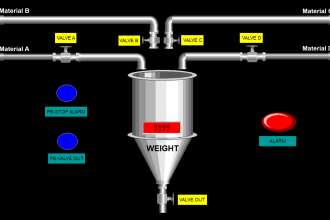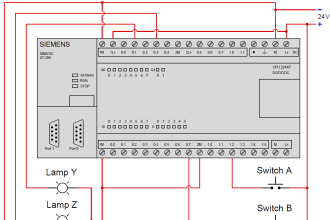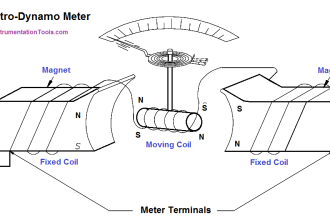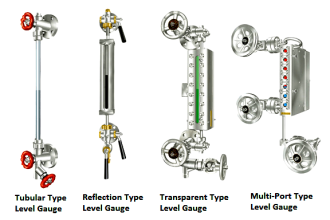Pneumatic Control Mechanisms Objective Questions
1. With a proportional-plus-integral controller, a sustained error will result in:
a. Windup
b. A fixed offset
c. A temporary narrowing of the proportional band
d. A delay in the process
Answer: a
2. By locating the derivative function in the input measurement circuit, which of the following advantages can be realized?
a. Smooth bump-less transfer
b. No derivative bump with a set-point change
c. No proportional response to a set-point change
d. Integral adjustment is isolated from response
Answer: b
3. If proportional-plus-integral control is good, the addition of derivative:
a. Will anticipate changes and speed up corrections
b. Will always improve control
c. Will make the controller adjustments easier to accomplish
d. May create stability problems in some system
Answer: d
4. The advantage of adding derivative to a controller is always:
a. Increased stability
b. The ability to overcome a big pure dead time lag
c. The ability to react more quickly to measurement change
d. A decrease in the pure dead time of the process
Answer: c
5. For fail-safe action the control valve should, upon energy (air) failure:
a. Open
b. Close
c. Move in such direction as to make the process nonhazardous
d. Stay in its previous position
Answer: c
6. If the closed-loop control system has too much gain, it will cycle. The only loop component that has conveniently adjustable gain is the
a. Measuring transmitter
b. Valve operator
c. Process
d. Controller
Answer: d
7. Adjusting the controller for optimum performance:
a. Is not required, because it adjusts itself
b. Requires a special tool
c. Is usually done by trial and error
d. Always requires a very involved mathematical analysis of the process
Answer: c
8. A process is to be controlled using an all pneumatic system. The maximum distance between loop components will be:
a. 1,000 feet
b. 500 feet
c. 200 feet
d. 20 feet
Answer: c
9. If the distance between loop components in the all pneumatic control system must be increased it will require:
a. A pneumatic volume booster
b. Larger sized tubing
c. Smaller sized tubing
d. Conversion to an electrical signal
Answer: d
10. Pneumatic signals travel through the signal tubing at:
a. 100 feet per second
b. Approximately the speed of sound
c. A rate that depends on tubing size
d. Approximately the speed of light
Answer: b
11. The integral dial in a pneumatic controller is calibrated in
a. Minutes or repeats
b. Integral units
c. Gain
d. Percentage
e. Offset
Answer: a
12. In a proportional-only controller, if the measurement equals the set point the output will equal the bias. True or False ?
a.True
b. False
Answer: a
13. In an integral controller, the rate of change of the output is proportional to the error. True or False ?
a.True
b. False
Answer: a
14. The larger the number on the integral dial the greater the effect of the integral action. True or False ?
a.True
b. False
Answer: b
15. In a batch operation, if a controller has wound up, it is quite possible that the valve may stay in an extreme position until the measurement actually goes beyond the set point before the valve begins to change its position. True or False ?
a.True
b. False
Answer: a
16. What some manufacturers call rate others call derivative ? True or False ?
a.True
b. False
Answer: a
17. Indicate all correct Statements. For each statement True or False ?
a.Gain is the reciprocal of the proportional band.
b. The proportional band is the reciprocal of gain.
c. The proportional band times the gain equals 1.
d. The gain divided by the proportional band equals 1.
e. The narrower the proportional band, the higher the gain.
f. The wider the proportional band, the lower the gain.
Answer : a – True, b – True, c – True, d – False, e – True, f – True,
18. In a process controlled by a proportional-plus-integral controller, the measurement was at the set point and the output was 9 psi (60 kPa). The measurement then quickly decreased to a certain value below the set point and leveled out there. The output responded by changing to 8 psi (55 kPa). As time progresses, what would you expect from the output pressure?
a. Increase to 9 psi (60 kPa) to bring the measurement back to the set point
b. Remain at 8 psi (55 kPa) as long as the measurement stays where it is.
c. Decrease and continue to decrease to 3 psi (20 kPa).
d. Continue to decrease until the measurement reaches the set point, or if it does not return to the set point, decrease to 0 psi.
Answer: d
19. The range of the temperature measuring system used in conjunction with a Model 130 proportional-only controller is 0 to 150°f (66°C). The output is 9 psi (60 kPa) when the set point and indicator are both at 75°f (24°C). If the proportional band is 200 percent, what is the output when the measurement is 150°f (66°C)?
a. 9 psi (60 kPa)
b. 3 psi (20 kPa)
c. 12 psi (83 kPa)
d. 15 psi (100 kPa)
Answer: c
20. If the span of a measuring transmitter in a control system is made one-half of its value, the proportional-band adjustment in the controller must be -to maintain the same quality of control.
a. Cut in half
b. Doubled
c. Squared
d. Narrowed
Answer: b
NOTE : Pneumatic Controls are outdated in practical industries. These are shared for learning the basics.

